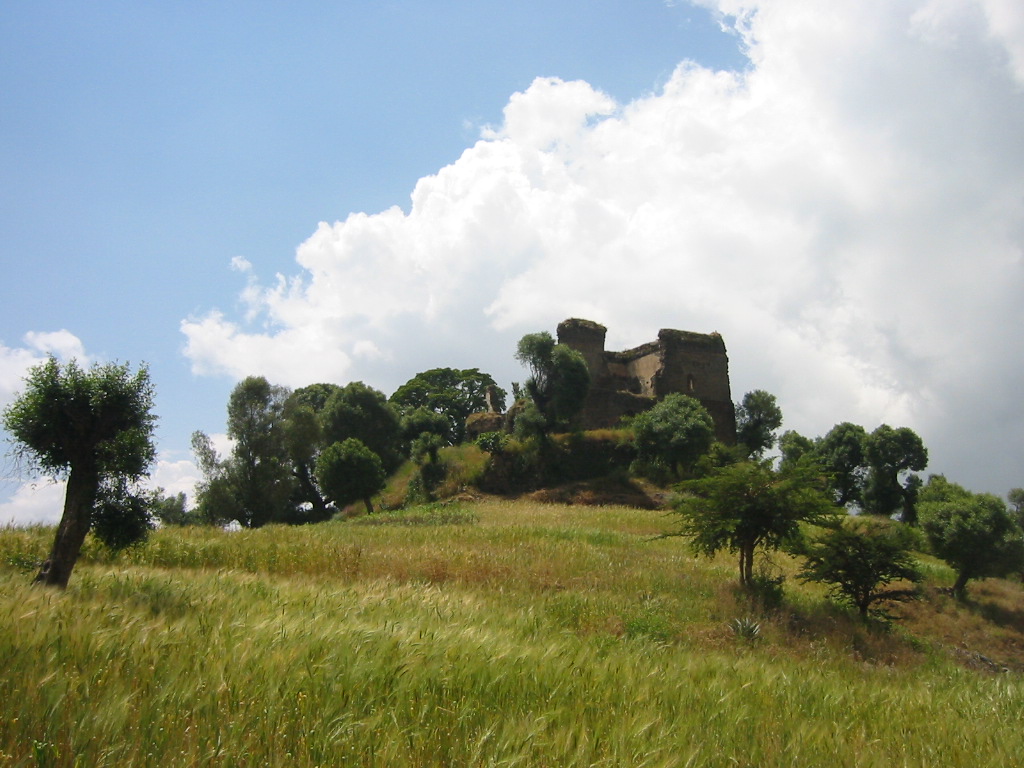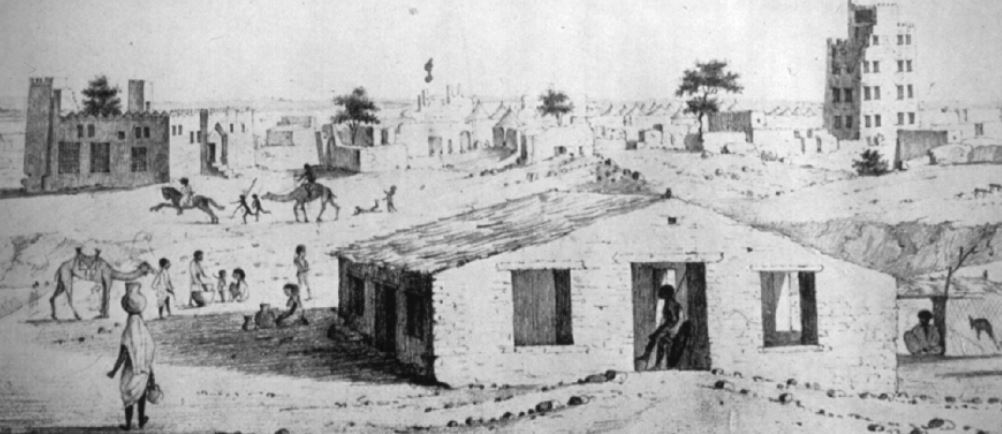|
Adlan I
Adlan I (reigned 1606 - 1611/12) was a ruler of the Kingdom of Sennar. Life He was the son of Ayat, although James Bruce writes he was the son of Unsa I and the brother of Abd al-Qadir, whom he deposed and exiled from Sennar. Adlan was, in turn, deposed by his nephew Badi. During his reign, Sennar was at peace with its neighbor, Ethiopia Ethiopia, officially the Federal Democratic Republic of Ethiopia, is a landlocked country located in the Horn of Africa region of East Africa. It shares borders with Eritrea to the north, Djibouti to the northeast, Somalia to the east, Ken .... The Ethiopian ''Royal Chronicles'' mention that Adlan sent a team of fine horses to Emperor Susenyos as gifts. H. Weld Blundell, ''The Royal chronicle of Abyssinia, 1769-1840'' (Cambridge: University Press, 1922), p. 530. References Funj sultans 17th-century monarchs in Africa {{Africa-royal-stub ... [...More Info...] [...Related Items...] OR: [Wikipedia] [Google] [Baidu] |
Kingdom Of Sennar
The Funj Sultanate, also known as Funjistan, Sultanate of Sennar (after its capital Sennar) or Blue Sultanate (due to the traditional Sudanese convention of referring to black people as blue) (), was a monarchy in what is now Sudan, northwestern Eritrea and western Ethiopia. Founded in 1504 by the Funj people, it quickly converted to Islam, although this conversion was only nominal. Until a more orthodox form of Islam took hold in the 18th century, the state remained an "African empire with a Muslim façade". It reached its peak in the late 17th century, but declined and eventually fell apart in the 18th and 19th centuries. In 1821, the last sultan, greatly reduced in power, surrendered to the Ottoman Egyptian invasion without a fight. History Origins Christian Nubia, represented by the two medieval kingdoms of Makuria and Alodia, began to decline from the 12th century. By 1365 Makuria had virtually collapsed and was reduced to a rump state restricted to Lower Nubia, until ... [...More Info...] [...Related Items...] OR: [Wikipedia] [Google] [Baidu] |
James Bruce
James Bruce of Kinnaird (14 December 1730 – 27 April 1794) was a Scottish traveller and travel writer who physically confirmed the source of the Blue Nile. He spent more than a dozen years in North and East Africa and in 1770 became the first European to trace and document the course of the Nile by following it upstream from Egypt through Sudan to its origins in the Blue Nile in Ethiopia. Early life James Bruce was born at the family seat of Kinnaird, Stirlingshire, and educated at Harrow School and Edinburgh University. He began to study for the bar, but his marriage to the daughter of a wine importer and merchant resulted in him entering that business instead. His wife died in October 1754, within nine months of marriage, and Bruce thereafter travelled in Portugal and Spain as part of the wine trade. The examination of oriental manuscripts at the Escorial in Spain led him to the study of Arabic and Geʽez and determined his future career. In 1758, his father's death ... [...More Info...] [...Related Items...] OR: [Wikipedia] [Google] [Baidu] |
Unsa I
UNSA may refer to: Universities * Universitas Surakarta, Surakarta, Indonesia * Université de Nice Sophia Antipolis, Nice, France * National University of St Augustin of Arequipa (''Universidad Nacional de San Agustín de Arequipa''), Arequipa, Peru * University of Sarajevo, Bosnia and Herzegovina * National University of Salta The National University of Salta () is an Argentine public national university in Salta. It was founded on 11 May 1972 as a part of the ''Plan Taquini'', a reorganization plan for education. It has around 20,000 students. Overview The universi ... (''Universidad Nacional de Salta'', UNSa), Salta, Argentina * University of Newcastle Students' Association, Australia Other * '' Union nationale des syndicats autonomes'', a French trade union * UNSA Stadium, Arequipa, Peru * United Nations Space Alliance, a faction in Call of Duty: Infinite Warfare * '' Union nationale des syndicats agricoles'', a defunct French farmers' union {{disambiguation ... [...More Info...] [...Related Items...] OR: [Wikipedia] [Google] [Baidu] |
Abd Al-Qadir II
Abd al-Qadir II was a ruler of the Kingdom of Sennar (1603/4 - 1606). According to James Bruce, he was the son of Unsa I, whom Bruce describes as "a weak and ill-inclined man". While he was ruler of Sennar, Emperor Susenyos of Ethiopia sent to Abd al-Qadir a ''nagarit'', or kettle-drum, richly decorated with gold, which was one of the traditional emblems of an Ethiopian negus or king; in return, Abd al-Qadir sent Susenyos a trained hunting falcon. Shortly after this diplomatic exchange, he was deposed by his brother Adlan. At some point following his deposition from the throne in 1606, Emperor Susenyos of Ethiopia Susenyos I ( ; –1575 – 17 September 1632), also known as Susenyos the Catholic, was Emperor of Ethiopia from 1607 to 1632, and a member of the Solomonic dynasty. His throne names were Seltan Sagad and Malak Sagad III. He was the son of '' ... appointed him governor of Chilga (also known as Ayikel), an important market town near the Ethiopian border with Sennar. ... [...More Info...] [...Related Items...] OR: [Wikipedia] [Google] [Baidu] |
Badi I
Badi I (1611/12 – 1616/17), also known as Badi el Kawam, was a ruler of the Kingdom of Sennar. During his reign, Sennar was at peace with its neighbor, Ethiopia. The Ethiopian ''Royal Chronicles'' mention that Emperor Susenyos of Ethiopia responded to the gift Badi's predecessor had sent him by sending to Sultan Badi bracelets of gold and a gold-mounted saddle. However, according to James Bruce, Badi found insult in the ''negarit'' which Emperor Susenyos had sent his father, Abd al-Qadir, interpreting it as a symbol that Sennar was a dependency of Ethiopia. This led him to sending an insulting present to Susenyos—two old, blind and lame horses—then followed up the insult by sending his retainer Nile Wed Ageeb to raid Ethiopian territories. Susenyos met this threat by making a separate treaty of peace with Wed Ageeb, who went over to the Ethiopian side. The hostilities between the two kingdoms increased when the governor of the Mazaga, Alico, who was a servant of Emperor Suse ... [...More Info...] [...Related Items...] OR: [Wikipedia] [Google] [Baidu] |
Ethiopia
Ethiopia, officially the Federal Democratic Republic of Ethiopia, is a landlocked country located in the Horn of Africa region of East Africa. It shares borders with Eritrea to the north, Djibouti to the northeast, Somalia to the east, Kenya to the south, South Sudan to the west, and Sudan to the northwest. Ethiopia covers a land area of . , it has around 128 million inhabitants, making it the List of countries and dependencies by population, thirteenth-most populous country in the world, the List of African countries by population, second-most populous in Africa after Nigeria, and the most populous landlocked country on Earth. The national capital and largest city, Addis Ababa, lies several kilometres west of the East African Rift that splits the country into the African Plate, African and Somali Plate, Somali tectonic plates. Early modern human, Anatomically modern humans emerged from modern-day Ethiopia and set out for the Near East and elsewhere in the Middle Paleolithi ... [...More Info...] [...Related Items...] OR: [Wikipedia] [Google] [Baidu] |
Susenyos Of Ethiopia
Susenyos I ( ; –1575 – 17 September 1632), also known as Susenyos the Catholic, was Emperor of Ethiopia from 1607 to 1632, and a member of the Solomonic dynasty. His throne names were Seltan Sagad and Malak Sagad III. He was the son of '' Abeto'' Fasil, as well as the grandson of ''Abeto'' Yakob and the great-grandson of Dawit II. As a result, while some authorities list Susenyos as a member of the Solomonic dynasty, others consider him—rather than his son, Fasilides—as the founder of the Gondar line of the dynasty (which is, however, ultimately a subset of the Solomonic dynasty). The life of Susenyos is known through his chronicle, written by several official writers (''sehafe te’ezaz''). The Jesuits, who were closely associated with Susenyos’s reign, also left numerous documents on their mission in Ethiopia. Manuel de Almeida, a Portuguese Jesuit who lived in Ethiopia during Susenyos reign, described the emperor as "tall with the features of a man of quality ... [...More Info...] [...Related Items...] OR: [Wikipedia] [Google] [Baidu] |
Funj Sultans
The Funj Sultanate, also known as Funjistan, Sultanate of Sennar (after its capital Sennar) or Blue Sultanate (due to the traditional Sudanese convention of referring to black people as blue) (), was a monarchy in what is now Sudan, northwestern Eritrea and western Ethiopia. Founded in 1504 by the Funj people, it quickly converted to Islam, although this conversion was only nominal. Until a more orthodox form of Islam took hold in the 18th century, the state remained an "African empire with a Muslim façade". It reached its peak in the late 17th century, but declined and eventually fell apart in the 18th and 19th centuries. In 1821, the last sultan, greatly reduced in power, surrendered to the Ottoman Egyptian invasion without a fight. History Origins Christian Nubia, represented by the two medieval kingdoms of Makuria and Alodia, began to decline from the 12th century. By 1365 Makuria had virtually collapsed and was reduced to a rump state restricted to Lower Nubia, until fi ... [...More Info...] [...Related Items...] OR: [Wikipedia] [Google] [Baidu] |



